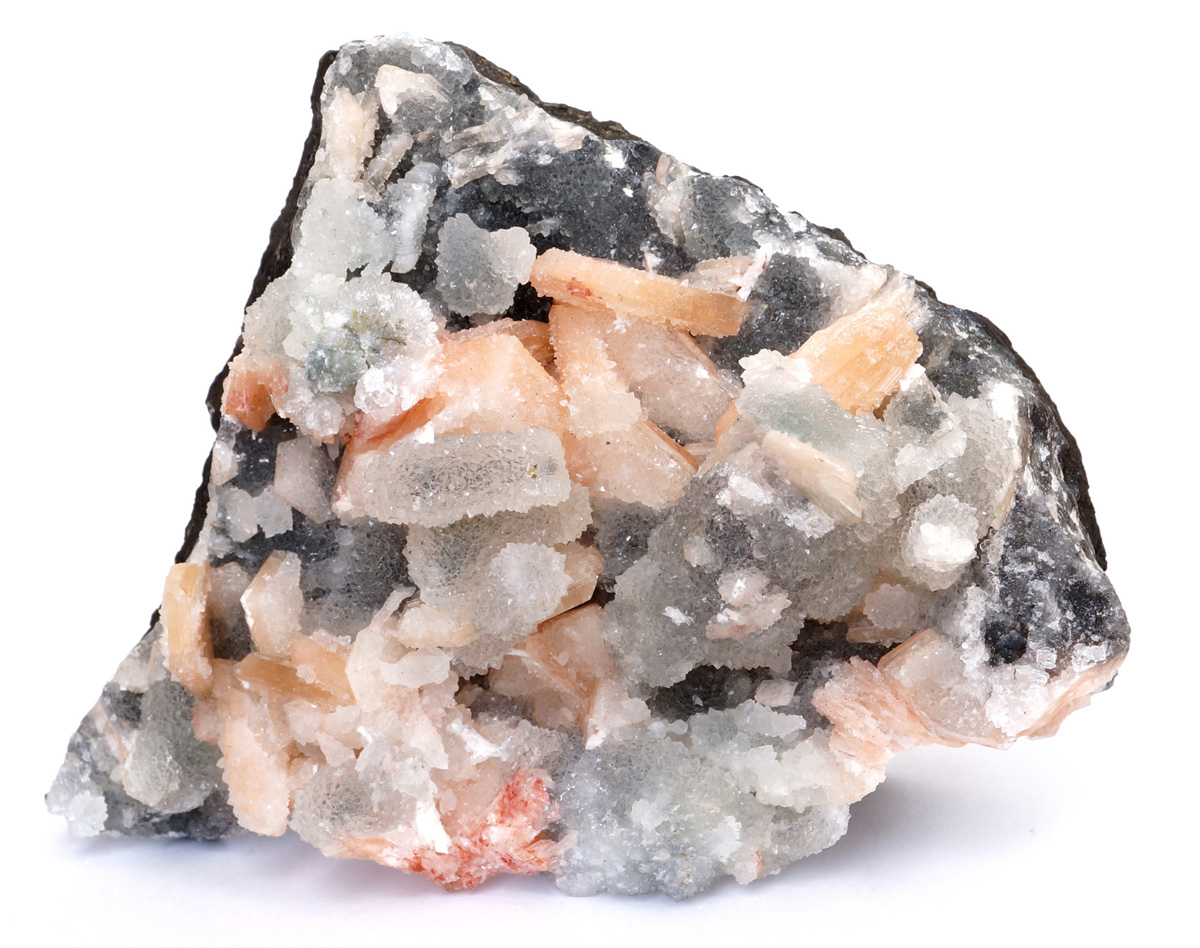
PHYSICAL PROPERTIES
- GROUP Silicates - tectosilicates
- COMPOSITION Na2Al2Si3O10·2H 2OR
- COLOR Light pink, colourless, white, grey, red, yellow or green
- CRYSTALLINE SYSTEM Rhombic
- CRYSTALLINE HABIT Acicular
- HARDNESS 5 - 5.5
- FRACTURE Uneven, brittle
- EXFOLIATION Perfect
- SHINE Vitreous to pearly
- STRIP White
- TRANSPARENCY From transparent to translucent
- SPECIFIC GRAVITY 2.3
MINERALOGICAL CHARACTERISTICS
The zeolite forms a group of more than 50 silicates that contain water and a particularly open three-dimensional crystalline structure. It forms tetrahedrons that surround the open cavities where molecules of water or elements such as potassium, calcium and sodium fit.
There are channels that run longitudinally through the zeolite crystal and link cavities, open on the surface. These channels facilitate the exchange of ions inside.
Within the zeolites the most widespread is natrolite. Others include gmelinite, harmotome, laumontite, heulandite, phillipsite, scolecite, mesolite, thomsonite, chabasite, stilbite, analcime, okenite, pectolite, and prehnite.
Deposits: Australia, India, Brazil, Great Britain, Italy, the Czech Republic and the United States.
THERAPEUTIC PROPERTIES
The zeolite is considered a healing stone at an energetic level. It is also used to absorb toxins and odors thanks to the exchange of ions.
At a curative level, it is indicated for cleansing toxins from the body, for goiter and swelling. As an elixir, zeolite is used to overcome addictions.


